
views
Understanding the Gear Shifter

Understand how the gear shift differs from a normal vehicle's shifter. If you're familiar with a manual transmission, the basic principles of the Eaton-Fuller Transmission shifter, the style used in many commercial trucks today, is similar but more complex. Basically, it's oriented like a five-speed, but with a total of four different ratios at each position, which you toggle by a combination of switches and positions. This results in a total combination of 18 different speeds. The shift knob has two switches controlling air-actuated gears. One is the range switch, which needs to be set on "Low" for gears Lo-4, and the other is the high/low splitter, which is used to toggle between the low and high setting at each gear. Your index finger operates the range switch, which allows you to flip between high and low at each gear position with your thumb.
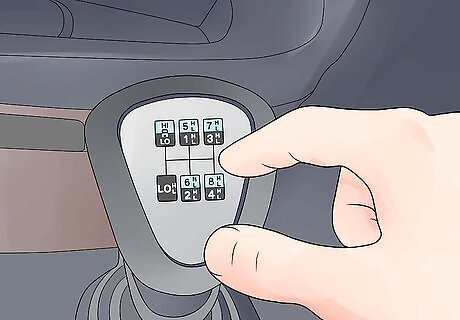
Learn the gear shift pattern. Most gear shifts have a diagram displaying the shifting pattern, which will help to clue you into the organization of the gears. The low gears are usually differentiated from the high gears by color, and reverse is indicated by an "R." Gears 1-4 should all be straightforward, but then to shift into fifth gear, you shift back to the first position, and the pattern repeats. First gear is in the same position as fifth, second in the same as sixth, and so on. Remember, at each position, you also have a total of four different speeds, though only two will be accessible, depending on where you shift from. In first gear, you've got 1L and 1H, as well as 5L and 5H.

Practice the gear pattern of the semi while the truck is stopped. This allows you to become familiar with the gear pattern so you can shift up and down without looking. This will help you keep your eyes safely on the road while driving. Grip the gear shift so that your index finger is available to work the range switch, and the middle and thumb can work the high/low splitter. If you don't have experience operating the clutch and driving a manual transmission vehicle, shifting a semi truck is going to have a much larger learning curve. Operating the gear shifter by itself is challenging enough, so you need to be very comfortable operating the clutch on a regular vehicle before you attempt to drive a semi. Practice on a regular car.
Getting into Gear
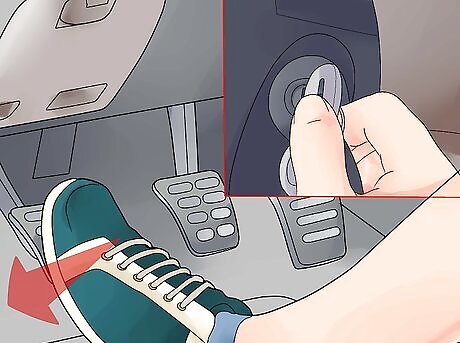
Start the truck. Hold the clutch pedal to the floor, as you would to start a normal manual transmission vehicle. This stops the transmission gears from turning, which allows the shifter to slide into gear. Select “LoL” by moving the shifter into the Lo-gear position, usually left and back. Check to make sure the range switch is in the low position (down), and the splitter is also on "L" and you'll be ready to start the vehicle.
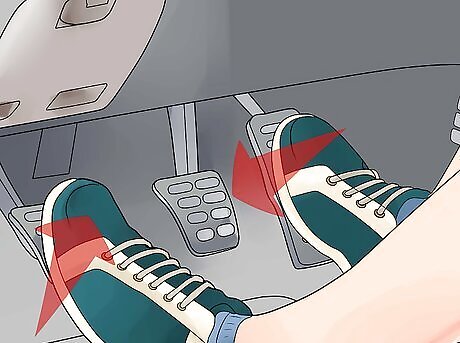
Push down the accelerator and slowly release the clutch. As you might guess when the vehicle's got 18 different speeds, getting the truck into Lo gear on Low setting will get you going about one mile per hour, if that. Once you've slid into it, release the clutch and you'll probably be ready to shift into Lo-H. To shift into Lo-H, you'll change the splitter to High gear to shift into high. You need to depress the clutch slightly, but not all the way to floor, then let it out to shift into Lo-H.
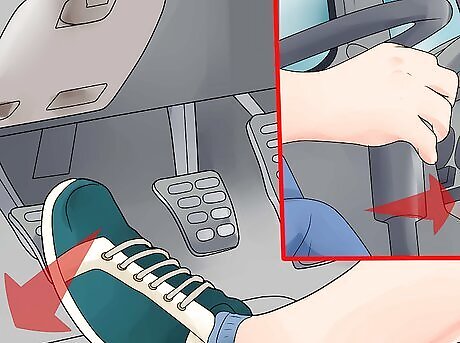
Double-clutch to shift into first gear, low setting. Depress the clutch again slightly (not to the floor) when the RPMs reach first-gear range, and switch the splitter back to "L," then pull the gear shift into the neutral position and release the clutch. Depress the clutch again, all the way, and push the gear shift into first, as you release the clutch. This is called double-clutching, and it's necessary because you can't split between low and high on the splitter while you're in neutral, meaning that you have to toggle from "H" back to "L," then shift into neutral, then operate the clutch again to get it into first. It's a lot of work.
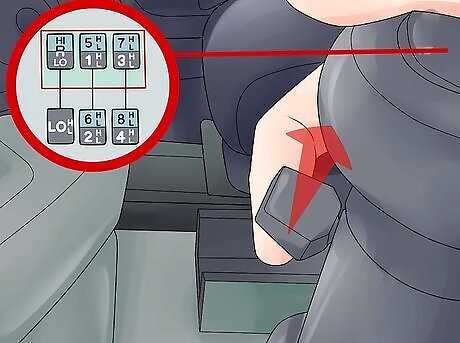
Continue this pattern through the first half of the gears. After you shift into 1-L you can flip the high/low switch up into the high position, continuing to accelerate and continuing this basic pattern through the upper gears. Repeat the previous steps through 1-H, 2-L, 2-H, 3-L, 3-H, 4-L, and 4-H. To make the half steps, continue pushing the splitter button, releasing the accelerator, pushing in, and releasing the clutch.
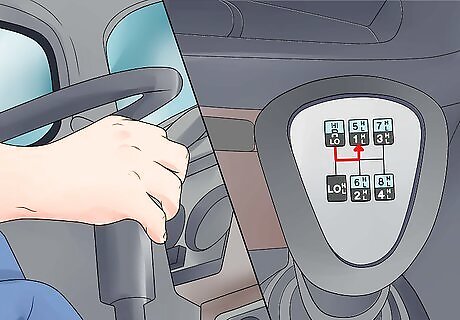
Switch over to fifth gear when you're ready. With the splitter switch in “L," flip up the range selector to 5-H, which will allow you to avoid grinding gears when you switch back into the first position. This is absolutely essential. Switch the range, then double-clutch-shift back to where 1 was before, and it will be fifth gear.
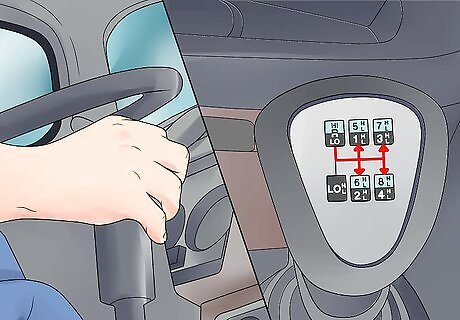
Continue shifting through the higher gears. The basic principles now repeats itself. Continue shifting and toggling between "L" and "H," shifting up through 5-H, 6-L, 6-H, 7-L, 7-H, 8-L, and, finally, 8-H.
Knowing When to Shift
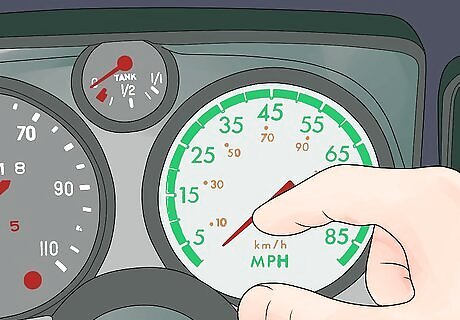
Use the color indicators on the tachometer. Most RPM gauges should be color-coded, with 1500 rpms at about the top (12 o'clock) of the gauge, which is typically colored green. This is the ideal place to shift between gears. 1700-2100 is typically beyond the point where you should be shifting, with the exception of going downhill. This region is typically colored Yellow, with anything above colored red. If you're less than 1200 rpm and try to shift, the engine is likely to splutter and possibly stall.

Get used to the general shifting conditions. After a while, you'll be able to familiarize yourself with the general positions that you need to shift, but in instruction school, you learn a few basic rules of thumb. Be in top gear at 50 mph (80.5 km/h) or greater. Generally speaking, if you're traveling at highway speeds or greater, you should be at top gear always. Be in fifth or sixth gear for sharp turns in city conditions. To avoid stalling, it's good to be switched over into the upper gears. Other general speed guidelines will vary from transmission to transmission, for different trucks. You'll need to ask your instructor or other experienced drivers for tips. Gain CDL exam confidence. "Working toward my CDL, I'm glad I found this site explaining how to shift a semi. It was super helpful and easy to understand, clearly walking through upshifting and downshifting. The Q&A section was useful, too. This gave me confidence that I'd ace the shifting portion of the CDL exam." - Bert J. Refresh a retired driver's knowledge. "As a retired truck driver, I wanted to share information with my son, who is interested in the field. I sent him this article to learn about different transmissions. It was the perfect refresher, even for me, on the steps for smooth shifting. Now, my son and I both benefitted from the clear explanations." - Bobby R. Drive successfully as a beginner. "With no prior experience, I worried about driving a semi. But reading and following the step-by-step shifting instructions here, I was able to drive the truck successfully! The article gave me the knowledge I needed as a total beginner." - Eddie M. Regain proficiency after time away. "As a Class A driver, this article refreshed my memory on shifting. After two years of driving automatic trucks, my manual shifting got rusty. The instructions brought me back up to speed on proper shifting techniques. Now, I regained my proficiency after time away from it." - Robert H. We want to hear from you! Advice from our readers makes our articles better. If you have a story you’d like to share, tell us here.
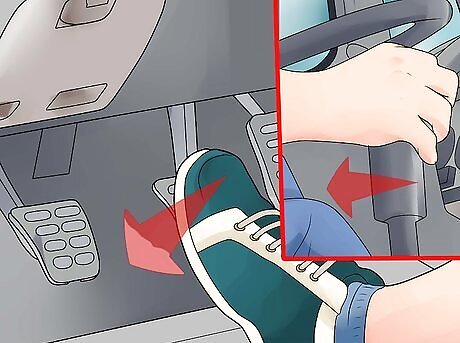
Downshift whenever you're slowing down. To downshift, you need to slow down to the rolling speed by hitting the brake, then select the gear for that range. Typically, you need to rev up to 1400-1600rpm, then slip the transmission into the proper gear for that speed range.




















Comments
0 comment